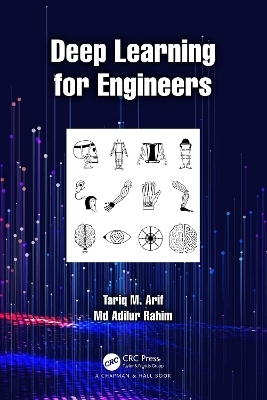
Deep Learning for Engineers
Chapman & Hall/CRC (Verlag)
978-1-032-51581-6 (ISBN)
Deep Learning for Engineers introduces the fundamental principles of deep learning along with an explanation of the basic elements required for understanding and applying deep learning models.
As a comprehensive guideline for applying deep learning models in practical settings, this book features an easy-to-understand coding structure using Python and PyTorch with an in-depth explanation of four typical deep learning case studies on image classification, object detection, semantic segmentation, and image captioning. The fundamentals of convolutional neural network (CNN) and recurrent neural network (RNN) architectures and their practical implementations in science and engineering are also discussed.
This book includes exercise problems for all case studies focusing on various fine-tuning approaches in deep learning. Science and engineering students at both undergraduate and graduate levels, academic researchers, and industry professionals will find the contents useful.
Tariq M. Arif is an assistant professor in the Department of Mechanical Engineering at Weber State University, UT. Prior to that, he worked at the University of Wisconsin, Platteville, as a lecturer faculty. Tariq obtained his Ph.D. in 2017 from the Mechanical Engineering Department of New Jersey Institute of Technology (NJIT), NJ. His main research interests are in the area of artificial intelligence and genetic algorithms for robotics control, computer vision, and biomedical simulations of focused ultrasound. He completed his Masters in 2011 from the University of Tokushima, Japan, and B.Sc. in 2005 from Bangladesh University of Engineering and Technology (BUET). Md Adilur Rahim is an accomplished engineer and researcher specializing in flood hazard characterization, risk assessment, and the application of advanced data analysis and deep learning techniques. Currently, he is working as a postdoctoral researcher at the Louisiana State University, AgCenter. He achieved his Ph.D. in Engineering Science in the summer of 2023 and M.Sc. in Civil Engineering in the spring of 2022 from Louisiana State University, LA. Earlier, in 2014, he graduated with a B.Sc. in Civil Engineering from the Bangladesh University of Engineering & Technology (BUET).
Chapter 1 ◾ Introduction
Chapter 2 ◾ Basics of Deep Learning
Chapter 3 ◾ Computer Vision Fundamentals
Chapter 4 ◾ Natural Language Processing Fundamentals
Chapter 5 ◾ Deep Learning Framework Installation: Pytorch and Cuda
Chapter 6 ◾ Case Study I: Image Classification
Chapter 7 ◾ Case Study II: Object Detection
Chapter 8 ◾ Case Study III: Semantic Segmentation
Chapter 9 ◾ Case Study IV: Image Captioning
| Erscheinungsdatum | 01.03.2024 |
|---|---|
| Zusatzinfo | 14 Line drawings, color; 117 Halftones, color; 131 Illustrations, color |
| Sprache | englisch |
| Maße | 156 x 234 mm |
| Gewicht | 480 g |
| Themenwelt | Informatik ► Theorie / Studium ► Künstliche Intelligenz / Robotik |
| Mathematik / Informatik ► Mathematik | |
| Technik ► Elektrotechnik / Energietechnik | |
| Technik ► Umwelttechnik / Biotechnologie | |
| ISBN-10 | 1-032-51581-3 / 1032515813 |
| ISBN-13 | 978-1-032-51581-6 / 9781032515816 |
| Zustand | Neuware |
| Informationen gemäß Produktsicherheitsverordnung (GPSR) | |
| Haben Sie eine Frage zum Produkt? |
aus dem Bereich


